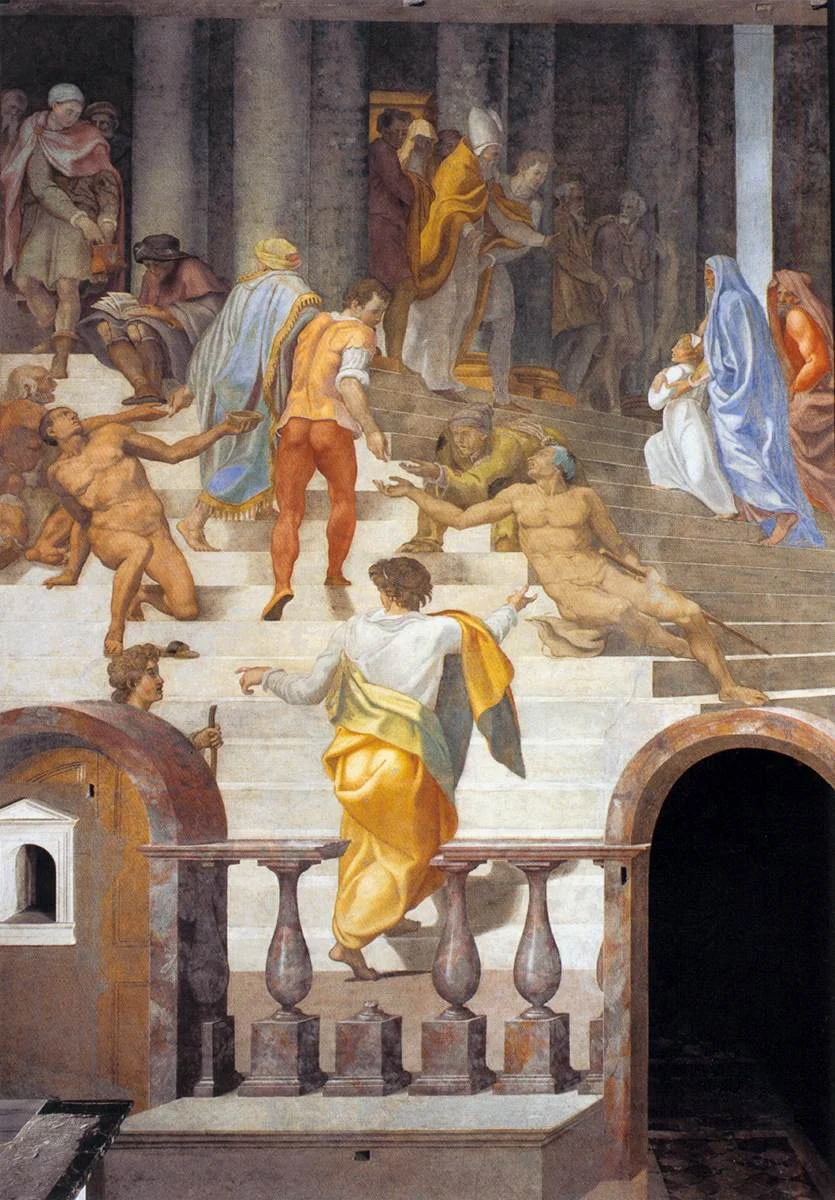Daniele da Volterra - Presentation of the Virgin
Daniele Ricciarelli da Volterra (1509-1566) was born in Volterra, a town in Tuscany, the painter and sculpture became known as Daniele da Volterra. He was a mannerist artist best remembered for his work in connection to Michelangelo (1475-1564).
Before befriending Michelangelo, Volterra studied in Siena with Giovanna Antonio Bazzi, called Il Sodoma (1477-1549) and Baldassare Peruzzi (1481-1537), and then with Piero Buonaccorsi, called Perin del Vaga (1501-1547). During this time he helped to complete works in the Palazzo Massimo alle Colonne in Rome, as well as in the Trinitá dei Monti and the San Marcello al Corso.
Volterra’s commission for the Orsini Chapel in the Trinitá dei Monti, were frescos he did based on drawings by Michelangelo.












